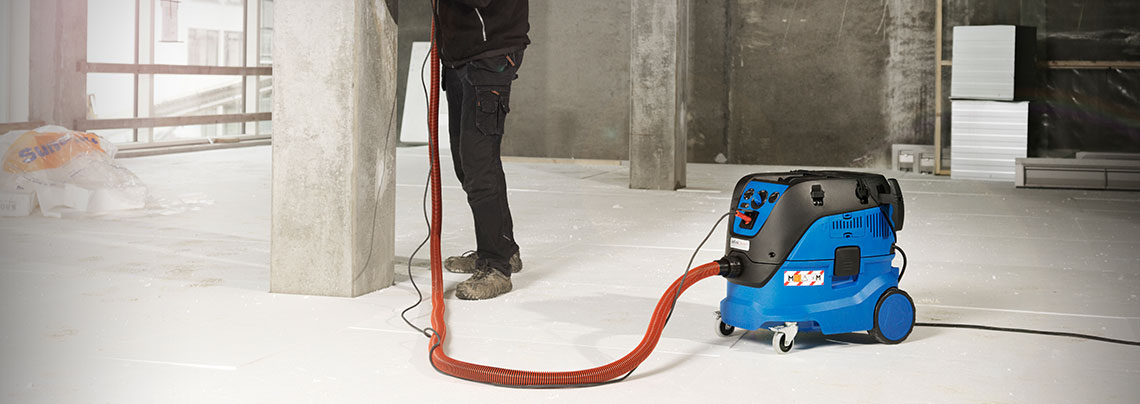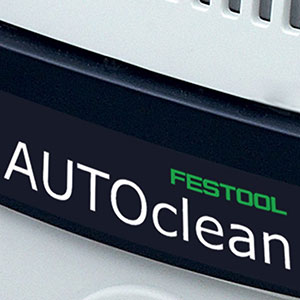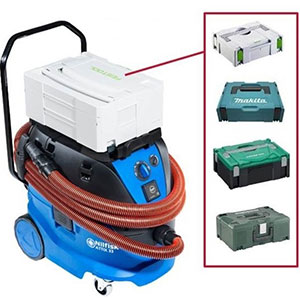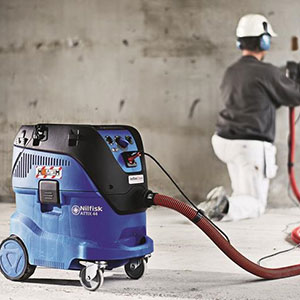Dust Extraction Classes Explained [2024]

I was recently working on the trade counter at one of our depots and was asked two questions regarding dust extraction…
“Why should I use dust extraction?” and “What is the difference between the various classes?”
I paused for thought and realised there are numerous reasons why dust extraction should be used, but equally as important, why the right class must be used for the specific task at hand.
This blog will cover the following:
- Effects of dust on human health
- Benefits of using a dust extractor
- HSE dust extraction regulations
- Dust extraction classes explained
- How do dust extractors work?
- What features are available and which extractor do I go for?
Effects of Dust on Human Health
If you can see dust then you’re definitely breathing in dust, which can lead to many serious lung illnesses and diseases. The effect of exposure to dust may not only be felt by you, but also by those working nearby. Only a tiny amount of silica is needed to cause long-term damage to your lungs. The HSE reported that there were around 39,000 individuals suffering from breathing and lung problems in the UK and there are around 8,000 deaths per year as a result of occupational cancer.
Saving Time and Money
if you’re not having to clean up dust and other cuttings, whether working on-site or in a workshop, packing away is much quicker meaning you can get home or move on to the next job much sooner.
Extracting dust will also prolong the life of your tool and accessories. If your tool isn’t constantly clogged with dust, it will simply work more efficiently and require much less maintenance. The same applies to the tool accessories, with dust removal increasing the life by up to 3x longer.
HSE Dust Extraction Regulations
The government-run Health and Safety Executive (HSE) have made dust a primary focus, giving out fines of up to £2000 where inefficient, the wrong, or no dust extraction is being used.
These three factors highlight the importance of using dust extraction, but what about using the correct type of dust extractor? This brings me to the second question “What is the difference between the various classes?”
There are three main classes of dust extraction in the UK market currently; L, M, and H Class. The official wording of the differences is as follows:
- L Class ≤ 1.0% Dusts with maximum allowable concentrations (MAC) > 1 mg/m³
- M Class < 0.1% Dusts with maximum allowable concentrations (MAC) ≥ 0.1 mg/m³
- H Class < 0.005% Dusts with maximum allowable concentrations (MAC) < 0.1 mg/m³
Dust Extraction Classes Explained
L Class extractors are regarded as ‘entry-level’ with M Class being the next step up. You can broadly separate them in terms of application, as follows:
- L Class: for softwoods and solid surface material such as Corian.
- M Class: for hardwoods, board materials, concrete and brick dust.
In reality, you will find that most professional L and M Class dust extractors will have similar suction rates and filtration levels. This means the applications they can be used for are fundamentally the same. The difference will come down to features on the machine.
M Class Dust Extractor
A true M Class dust extractor will have an audible alarm to advise you when the suction rate has dropped, for example a blocked hose or full dust bag. You will generally find that when working on site, the health and safety manager will insist on using M Class dust extraction. M Class is also the minimal legal requirement, set by the HSE, so these factors alone may dictate whether you step up from L Class to M Class, when making your next purchase.
H Class Dust Extractor
H Class dust extractors include all the features you find with M Class units, but also offer greater suction and filtration figures, even down to the way the bag is removed from the machine to avoid particles going back into the air. H Class vacuum extractors would generally be specified if you are working in environments with highly carcinogenic dust such as lead, carbon, tar, nickel, cobalt, copper, and cadmium along with other really nasty stuff you really don’t want to be breathing in!
- H Class – highly carcinogenic dust, asbestos, formaldehyde, mould, germs, and bacteria.
How do Dust Extractors Work?
Now we’ve ascertained that the use of dust extraction is essential and we also know which class of extractor best suits our needs.
Most professional and industrial dust extractors have power take-off which allows you to plug your power tool directly into the vacuum extractor, making the unit automatically turn on when the power tool is started. This removes the need to turn on the two items separately. There is also a delayed shut-off; when the power tool is stopped the extractor continues to run for around five seconds longer to clear both the tool and hose of any remaining particles.
What Other Features are Available and Which Extractor Do I Go For?

Another excellent feature available is a filter cleaning option – manually operated or completely automatic. Keeping the filter clean ensures maximum performance and also stops the motor from over-working, by trying to pull air through a clogged filter, which is the major cause of premature motor burn-out. The manually operated filter cleaning generally works by pressing a button, but you have to remember to do this regularly. The automatic filter cleaning is simply done by the extractor on its own during use. There is a build-up of pressure inside the machine and when released in the direction of the filter, any trapped particles are removed ensuring maximum extraction performance and minimum filter clogging.
Many of the professional and industrial dust extractors available today can also be used for wet or liquid applications, but you have to remember to change or remove the filter and dust bag. To avoid liquid getting into the motor and causing damage, there is an automatic cut-off feature on these machines that comes in when the water level reaches a certain height in the collection drum.

Another deciding factor may be the option of attaching your tools to the top of the extractor for easy transportation. Many power brands have a generic storage system, with the Tanos systainer system being the most common – currently used by brands such as Festool, Maxitek, Makita, Mafell, Metabo, Fein, Lamello, Mirka, Senco, and Hitachi. The Festool dust extractors have a built-in facility to stack systainer boxes on top. Other brands, such as Metabo and Nilfisk, still offer this facility but an attachment accessory needs to be fitted.
To see our full range of dust extractors and accessories click here.
FAQs
- How much exposure to silica dust is dangerous?
Frequently being exposed to construction dust can leave you vulnerable to certain diseases, such as lung cancer, asthma, Chronic Obstructive Pulmonary Disease (COPD), and silicosis. Construction workers have a high risk of developing these diseases because many common construction tasks can create high dust levels. Using high-energy tools, such as cut-off saws, grinders, wall chasers, and grit blasters produces a lot of dust in a very short time. This is why it is essential to use a dust extractor, and a respiratory mask, whilst dampening dust clouds in the area you are working with water.
- What are the types of dust masks and, which dust mask do I need??
Users of respiratory protective equipment need to understand that no dust mask will eliminate exposure, and avoidance of the contaminant with extraction at the source, should always be considered before relying on personal protective equipment.
In our recent blog ‘Five different dust mask types & when to use them’ we highlight the different dust masks available, and their benefits, intending to guide you to the most suitable mask for your needs.
- Why should I use dust extraction?
It is important not to rely purely on a mask when carrying out high-risk tasks, as often a mask cannot give the amount of protection needed, also the filter on some types of masks can quickly become clogged and stop working.
There are many common mistakes that people make with masks – these include choosing the wrong type, not being sized properly, or wearing them the wrong way.
A dust extractor will not only protect you as soon as your power tool is started but will continue to clear both the tool and hose of any remaining particles once you have finished.
Related Articles
Hopefully, this blog has been able to cover all the points when it comes to dust extraction selection and ensure you are fully informed before making a decision. Get in contact with us if we’ve missed anything and we’ll hopefully guide you through to the right conclusion that best suits your needs.





